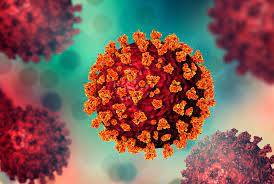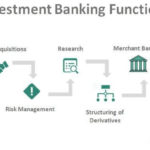The End of the Covid Emergency
If there was a silver lining to this horrible covid -19 pandemic, it’s that the velocity of People with out medical health insurance dropped to a near-historic low, in response to diversified federal initiatives related to the government-declared public successfully being emergency.
This story furthermore ran on The New York Instances. It may very well be republished free of charge.
Now, in consequence of the pandemic’s acute half seemingly attracts to an finish, 1000’s and 1000’s of low-income and middle-income People are vulnerable to dropping medical health insurance.
The USA would possibly even see thought-about one of many steepest will enhance inside the nation’s uninsured fee in years.
When the federal covid -19 public successfully being emergency ends — as a result of it is presently scheduled to on April 15, although it’s vulnerable to be prolonged — so will rather a lot of its related insurance coverage protection safety protections.
That comprises a rule forbidding states to kick anybody off Medicaid whereas covid-19 raged, which acquired proper right here together with a 6.2-percentage-point enhance in federal Medicaid funding to take care of these most weak victims insured.
Sooner than the pandemic, states would usually evaluation folks’s eligibility for Medicaid advantages and take away individuals who now not licensed.
Nevertheless with that apply suspended, Medicaid enrollment has grown by greater than 12 million in consequence of the starting of the pandemic; as many as 1 in 4 Individuals are actually insured by this system.
Subscribe to KHN’s free Morning Briefing.
When most individuals successfully being emergency expires and the additional federal funds disappear, states may very well be required to as shortly as as quickly as additional evaluation enrollees’ continued eligibility.
An entire bunch of 1000’s of folks might most likely be dropped inside the course of, as many as 15 million over time by some estimates.
That consists of folks whose earnings has risen, those that moved to a particular state, or individuals who merely haven’t returned the refined paperwork to point out their continued eligibility.
The tactic is byzantine even in frequent conditions, accomplished by mail in rather a lot of states, making it notably unreliable given what quantity of folks have relocated all by means of the pandemic.
Numerous the 1000’s and 1000’s of people that lose Medicaid security, every as a result of of they now not qualify or as a result of of they’re in each different case dropped from the state’s rolls, sometimes mistakenly, are vulnerable to uncover they’re uninsured solely after they subsequent search medical care, paying homage to after they go to a clinic or go to a pharmacy to refill a prescription.
And that’s in a rustic the place an inhaler can price $50 to $100, a nicely being care provider’s go to usually prices over $100, and hospitalization for covid-19 can run tens of 1000’s of {dollars}.
On prime of all that, the enhanced authorities subsidies to purchase Moderately priced Care Act successfully being plans — provisions of the American Rescue Plan Act that make insurance coverage protection safety extra reasonably priced for low- and even some middle-income folks — expire at yr’s finish.
As an illustration, premiums for a “silver diploma” successfully being plan that can usually price $560 a month on common have been decreased to solely $390 with the additional authorities help for any particular person incomes $55,000 a yr, leading to an annual financial monetary financial savings of over $2,000.
When these enhanced subsidies expire, many lower-income Individuals might most likely be left with the prospect of paying double for successfully being security.
The Assemble Once extra Greater authorized pointers, which handed the Residence in November, would have prolonged the extra beneficiant subsidies for buying ACA successfully being plans.
Nevertheless the invoice was declared “useless” this yr by Democratic Sen. Joe Manchin of West Virginia, who refused to help it. Now Democratic leaders are hoping to barter a slimmed-down model of the invoice, nonetheless it’s unclear whether or not or not or not a invoice will materialize with the availability in it.
It is a dangerous time to throw low- and middle-income People off the insurance coverage protection safety cliff:
A mannequin new omicron subvariant is spreading, and a program that supplied coronavirus testing and covid remedy with out value to the uninsured expired in March as a result of of the federal authorities ran out of funds to help it.
One totally different program that supplied vaccination with out value to victims is about to finish this month.
Most folks successfully being emergency half of the pandemic could also be winding down. Deaths presently frequent about 700 a day and are dropping. Faculties and workplaces are reopening, some with out masking.
Nevertheless about one-third of People are nonetheless not vaccinated. And, going ahead, will newly uninsured low- and middle-income People be inclined to pay out-of-pocket to get a shot?
Within the event that they get covid, how will they afford the tablets to deal with it, when the federal authorities purchased Pfizer’s Paxlovid remedy for $530 a course and prospects may pay far more on the free market?
Victims weak to dropping their medical medical insurance coverage will not be ready for the change. There’s been little mainstream outreach relating to the coming modifications, and lots of folks will not be taught authorities advisories or perceive the ins and outs of pandemic successfully being safety.
If folks lose Medicaid this yr, they’ll have an opportunity to enroll in an ACA successfully being plan; the present enhanced subsidies point out they might be vulnerable to pay little or nothing in the simplest way of premiums till the tip of the yr — at which stage insurance coverage protection safety may develop to be unaffordable and they also may fall off the insurance coverage protection safety cliff as quickly as additional.
Preserving insurance coverage protection safety choices for low- and middle-income folks is a vital totally different that grew out of our two-year-long nationwide calamity.

It shouldn’t be squandered. Finally, covid is only one of many sicknesses that unduly have an effect on poorer folks with out insurance coverage protection safety.
KFF polling in March discovered that People are extra apprehensive about “sudden medical funds” than about with the flexibility to afford meals.
The federal authorities has promised to provide 60 days’ discover earlier than most individuals successfully being emergency interval ends for good, when states must trim their Medicaid rolls.
The improved ACA subsidies don’t finish till Dec. 31. There’s nonetheless time to hunt out funding and act. Because the hazard of contracting an important case of covid recedes, the hazard of being uninsured shouldn’t develop.
erosenthal@kff.org, @rosenthalhealth
Share This Story:
We wish to hear from you: Contact Us
Republish This Story
If there was a silver lining to this horrible covid-19 pandemic, it’s that the velocity of People with out medical medical insurance coverage dropped to a near-historic low, in response to diversified federal initiatives related to the government-declared public successfully being emergency.
Now, in consequence of the pandemic’s acute half seemingly attracts to an finish, 1000’s and 1000’s of low-income and middle-income People are vulnerable to dropping medical health insurance. The USA would possibly even see thought-about one of many steepest will enhance inside the nation’s uninsured fee in years.
When the federal covid-19 public successfully being emergency ends — as a result of it is presently scheduled to on April 15, although it’s vulnerable to be prolonged — so will rather a lot of its related insurance coverage protection safety protections.
That comprises a rule forbidding states to kick anybody off Medicaid whereas covid-19 raged, which acquired proper right here together with a 6.2-percentage-point enhance in federal Medicaid funding to take care of these most weak victims insured.
Sooner than the pandemic, states would usually evaluation folks’s eligibility for Medicaid advantages and take away individuals who now not licensed. Nevertheless with that apply suspended, Medicaid enrollment has grown by greater than 12 million in consequence of the starting of the pandemic; as many as 1 in 4 Individuals are actually insured by this system.
When most individuals successfully being emergency expires and the additional federal funds disappear, states may very well be required to as shortly as as quickly as additional evaluation enrollees’ continued eligibility. An entire bunch of 1000’s of folks might most likely be dropped inside the course of, as many as 15 million over time by some estimates.
That consists of folks whose earnings has risen, those that moved to a particular state, or individuals who merely haven’t returned the refined paperwork to point out their continued eligibility.
The tactic is byzantine even in frequent conditions, accomplished by mail in rather a lot of states, making it notably unreliable given what quantity of folks have relocated all by means of the pandemic.
Numerous the 1000’s and 1000’s of people that lose Medicaid security, every as a result of of they now not qualify or as a result of of they’re in each different case dropped from the state’s rolls, sometimes mistakenly, are vulnerable to uncover they’re uninsured solely after they subsequent search medical care, paying homage to after they go to a clinic or go to a pharmacy to refill a prescription.
And that’s in a rustic the place an inhaler can price $50 to $100, a nicely being care provider’s go to usually prices over $100, and hospitalization for covid-19 can run tens of 1000’s of {dollars}.
On prime of all that, the enhanced authorities subsidies to purchase Moderately priced Care Act successfully being plans — provisions of the American Rescue Plan Act that make insurance coverage protection safety extra reasonably priced for low- and even some middle-income folks — expire at yr’s finish.
As an illustration, premiums for a “silver diploma” successfully being plan that can usually price $560 a month on common have been decreased to solely $390 with the additional authorities help for any particular person incomes $55,000 a yr, leading to an annual financial monetary financial savings of over $2,000.
When these enhanced subsidies expire, many lower-income Individuals might most likely be left with the prospect of paying double for successfully being security.
The Assemble Once extra Greater authorized pointers, which handed the Residence in November, would have prolonged the extra beneficiant subsidies for buying ACA successfully being plans.
Nevertheless the invoice was declared “useless” this yr by Democratic Sen. Joe Manchin of West Virginia, who refused to help it. Now Democratic leaders are hoping to barter a slimmed-down model of the invoice, nonetheless it’s unclear whether or not or not or not a invoice will materialize with the availability in it.
It is a dangerous time to throw low- and middle-income People off the insurance coverage protection safety cliff:
A mannequin new omicron subvariant is spreading, and a program that supplied coronavirus testing and covid remedy with out value to the uninsured expired in March as a result of of the federal authorities ran out of funds to help it. One totally different program that supplied vaccination with out value to victims is about to finish this month.
Most folks successfully being emergency half of the pandemic could also be winding down. Deaths presently frequent about 700 a day and are dropping. Faculties and workplaces are reopening, some with out masking. Nevertheless about one-third of People are nonetheless not vaccinated.
And, going ahead, will newly uninsured low- and middle-income People be inclined to pay out-of-pocket to get a shot? Within the event that they get covid, how will they afford the tablets to deal with it, when the federal authorities purchased Pfizer’s Paxlovid remedy for $530 a course and prospects may pay far more on the free market?
Victims weak to dropping their medical medical insurance coverage will not be ready for the change. There’s been little mainstream outreach relating to the coming modifications, and lots of folks will not be taught authorities advisories or perceive the ins and outs of pandemic successfully being safety.
If folks lose Medicaid this yr, they’ll have an opportunity to enroll in an ACA successfully being plan; the present enhanced subsidies point out they might be vulnerable to pay little or nothing in the simplest way of premiums till the tip of the yr — at which stage insurance coverage protection safety may develop to be unaffordable and they also may fall off the insurance coverage protection safety cliff as quickly as additional.
Preserving insurance coverage protection safety choices for low- and middle-income folks is a vital totally different that grew out of our two-year-long nationwide calamity.
It shouldn’t be squandered. Finally, covid is only one of many sicknesses that unduly have an effect on poorer folks with out insurance coverage protection safety.
KFF polling in March discovered that People are extra apprehensive about “sudden medical funds” than about with the flexibility to afford meals.
The federal authorities has promised to provide 60 days’ discover earlier than most individuals successfully being emergency interval ends for good, when states must trim their Medicaid rolls.
The improved ACA subsidies don’t finish till Dec. 31. There’s nonetheless time to hunt out funding and act. Because the hazard of contracting an important case of covid recedes, the hazard of being uninsured shouldn’t develop.
We encourage organizations to republish our content material materials supplies, free of worth. Proper proper right here’s what we ask:
It is finest to credit score rating ranking us as a result of the distinctive writer, with a hyperlink to our khn.org internet web page. If potential, please embrace the distinctive creator(s) and “Kaiser Effectively being Info” inside the byline. Please defend the hyperlinks inside the story.
It’s essential to notice, not every issue on khn.org is accessible for republishing. If a narrative is labeled “All Rights Reserved,” we can not grant permission to republish that merchandise.








